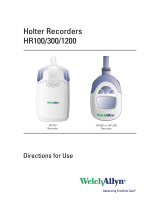
The user should try to avoid sweating, as sweat will affect the
contact between the ECG electrodes and the skin and affect the
quality of the measurement.
Do not participate in strenuous or extensive physical activities in
order to conduct proper monitoring.
In order to measure pulse oximetry and pulse rate more accurately,
the device should be used in a quiet and comfortable environment.
The measurement results of this equipment cannot distinguish all
diseases. If you feel unwell, you should consult your doctor
immediately in addition to referring to the measurement results of
this device.
Do not conduct self-diagnosis and medication based on the
measurement results of this device without consulting your doctor.
Especially do not take new drugs without prior permission.
This equipment cannot replace professional heart or other organ
function measurement equipment. Medical electrocardiogram
measurement requires more professional and complete
measurement.
Do not use the information displayed by the host as the only basis
for clinical diagnosis. The host is only used as an auxiliary means in
diagnosis. It must be used in conjunction with clinical
manifestations and symptoms and the doctor's diagnosis.
We recommend that you record your ECG curve and measurement
results, and provide them to your doctor for reference if necessary.
Although all parts of this equipment in contact with the human body
have been tested for biocompatibility, a very small number of users
may have allergic reactions, and should stop using them if they have
allergic reactions.
Continuous use for too long may increase the risk of undesirable
changes in cortical properties, such as allergies, redness, blistering
or burns. Check the wearing position every 6-8 hours.
The device is calibrated to display functional blood oxygen
saturation. The instrument should be calibrated and maintained
regularly by qualified professionals.
The function holter cannot be used to evaluate the accuracy of
equipment and sensors.
The device is used to determine the percentage of arterial oxygen






















